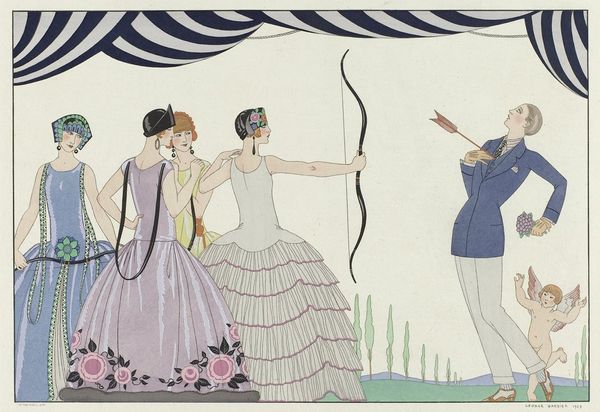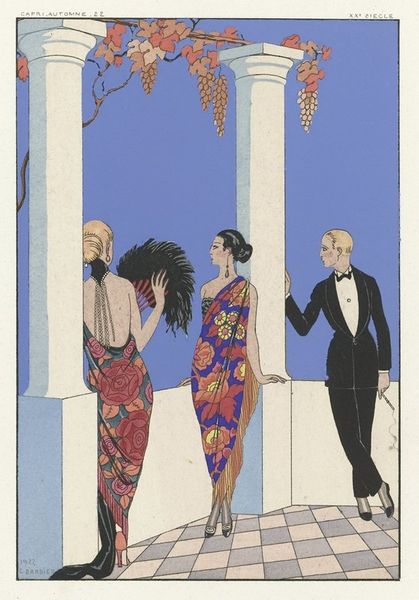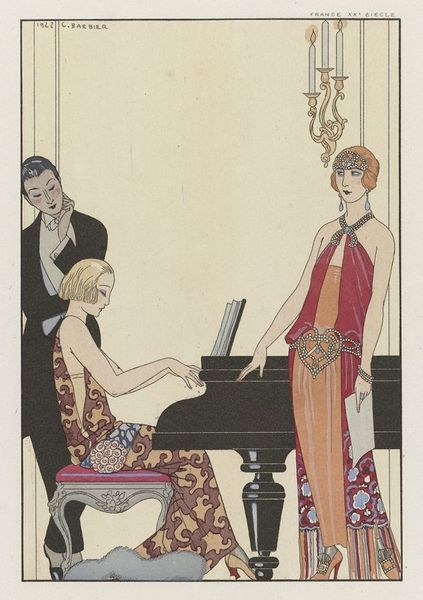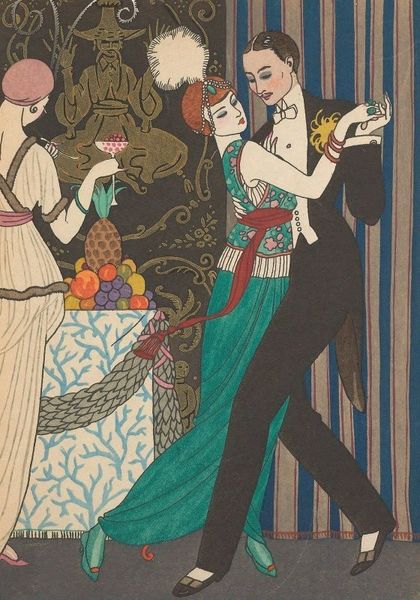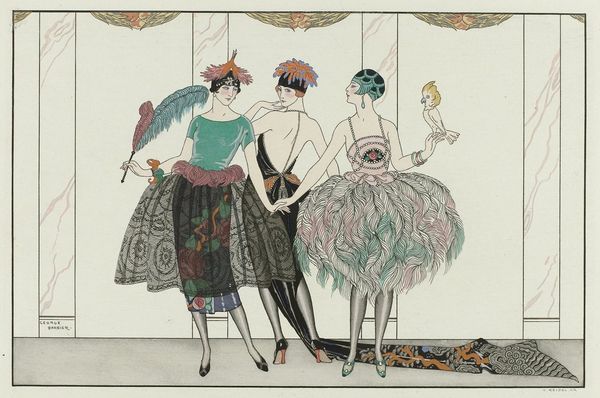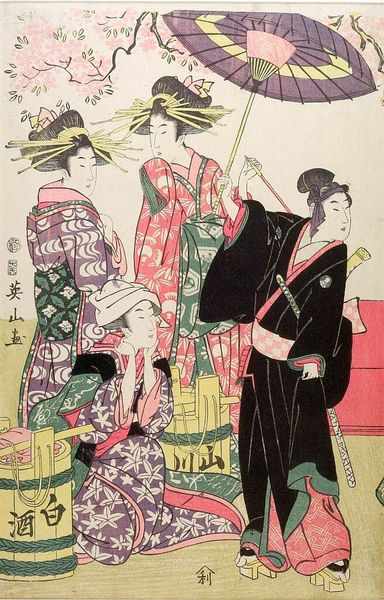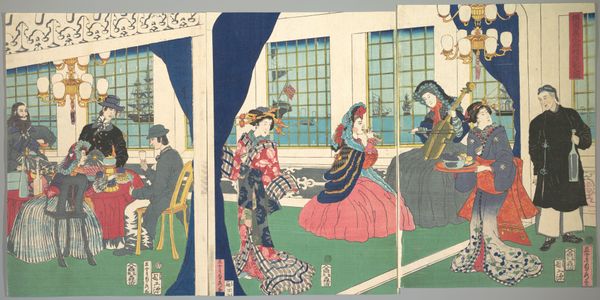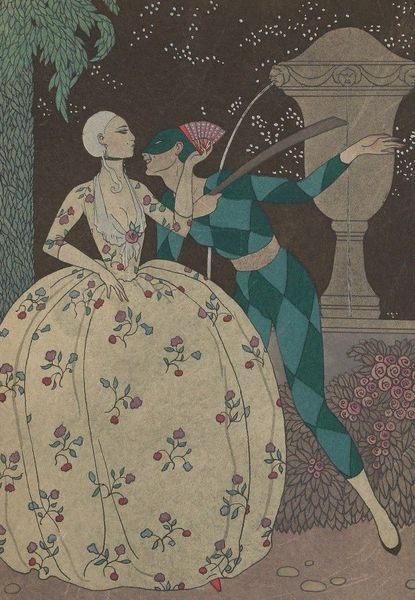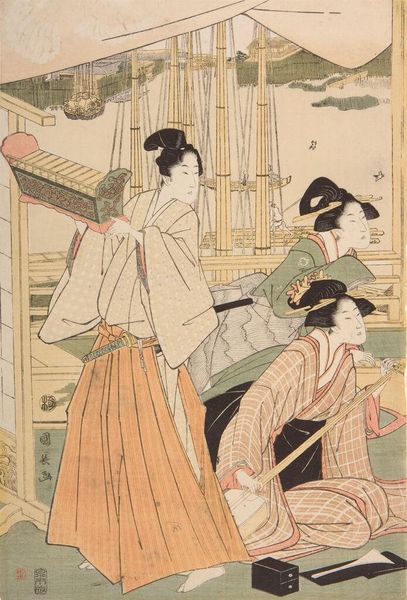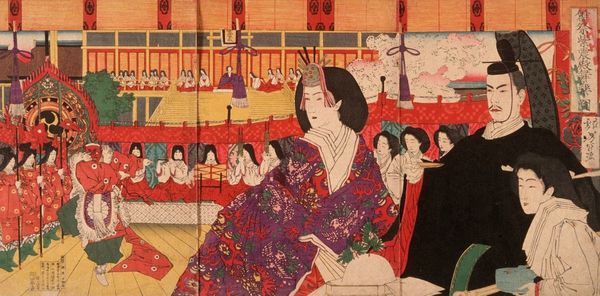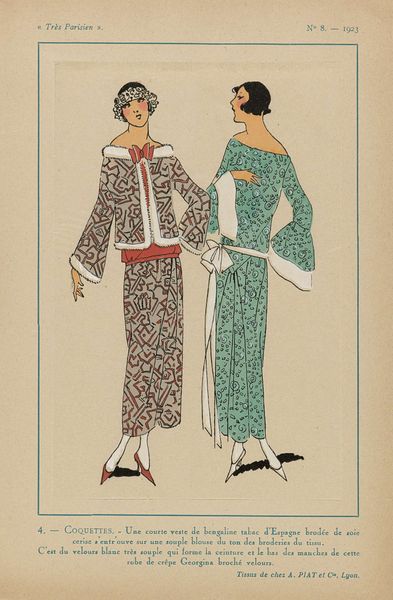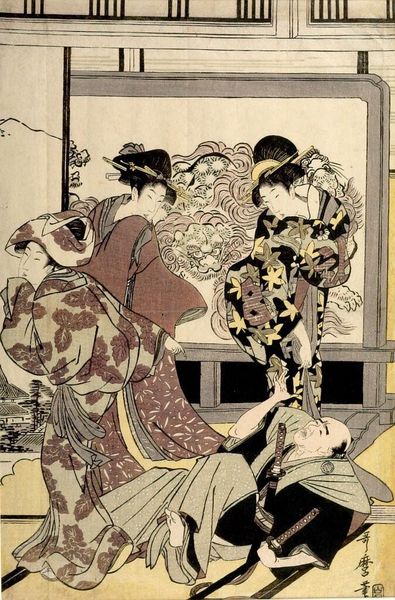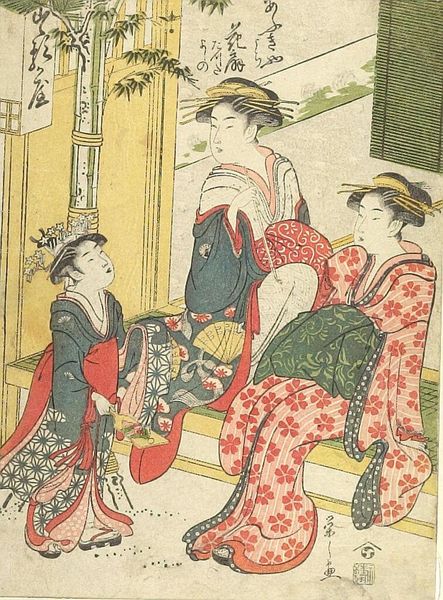
Copyright: Public Domain: Artvee
Editor: So, here we have George Barbier's "La Toilette Délicieuse" from 1921, rendered in ink and watercolor. The detailed focus on fashion really grabs my attention, especially that incredible draped garment. What strikes you about this piece? Curator: What immediately jumps out is the blatant display of luxury. Not merely the garments themselves, but the entire *process* of toilette being presented as a spectacle of consumption. Look at the precise lines, the deliberate application of watercolor—the *labor* involved in depicting this scene of leisure. How does that labor contrast with the subject’s idleness? Editor: That's a really interesting point! I hadn't thought about the artist's labor in contrast to the subjects'. The woman in the foreground, especially, is wearing this elaborate outfit, covered in what look like appliqued petals... were these designs reflective of wider material culture in Paris at the time? Curator: Absolutely. Barbier was deeply entrenched in the fashion world, and this reflects the post-war embrace of opulent, if sometimes impractical, designs. The extravagant ornamentation speaks volumes about the desires and anxieties of the time, the very means and matter of fashion dictating status and a particular ideal. It challenges a direct reading of “high art.” Editor: I see what you mean! The materiality almost becomes the subject itself, more so than the people depicted. It makes you think about where these materials come from and who actually produced those garments. Curator: Exactly. Consider the social implications: access to these materials, the ateliers where such clothing was made, the systems of patronage. Barbier's work becomes less about the pretty picture and more about the entire ecosystem of production and consumption it represents. Editor: That's given me so much to think about; looking at art as part of a broader industrial process, rather than a piece in itself, is a fascinating new perspective for me. Thanks for your insight! Curator: My pleasure! It’s always enlightening to consider how even the most seemingly frivolous of artworks can illuminate the mechanics of their own creation and social impact.
Comments
No comments
Be the first to comment and join the conversation on the ultimate creative platform.
